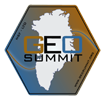STRATTON AIR NATIONAL GUARD BASE, N.Y. - The New York Air National Guard’s 109th Airlift Wing wrapped up its 2024 support for National Science Foundation research in Greenland at the end of August.
Throughout the season, which began in April, the 109th Airlift Wing’s Airmen conducted essential airlift missions to support scientific research on the Greenland ice cap.
The 109th Airlift Wing flies the LC-130. These are the largest aircraft in the world equipped with skis so they can land on snow and ice. These are also the only ski-equipped aircraft flown by the U.S. military.
The unit’s primary responsibilities included transporting personnel, equipment and supplies to remote locations.
These included Summit Station, a research station near the apex of the Greenland ice sheet, and East Grip, a science camp that drills and retrieves ice cores from the Northeast Greenland Ice Stream.
Supplies to rebuild Summit Station, manned year-round for critical weather information and climate research, were carried to the station by 109th aircraft.
